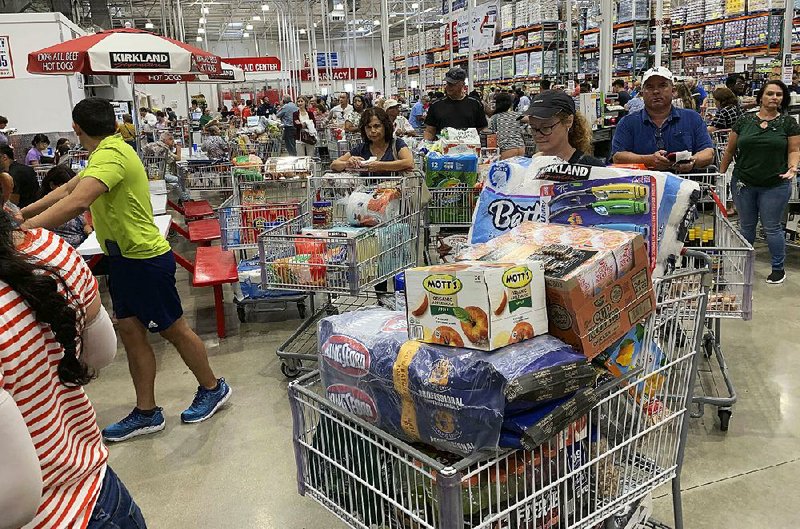WASHINGTON -- Overall consumer prices slowed in August, reflecting a big drop in the cost of gasoline and other energy products. But core inflation, which excludes volatile energy and food prices, was rising at its fastest pace in a year.
Economists said this increase in long-dormant inflation should not deter the Federal Reserve from cutting interest rates next week but could cause it to rethink any further rate cuts this year.
The Labor Department said its overall consumer price index edged up 0.1% in August, down from a 0.3% rise in July.
However, core inflation was up 0.3% in August, the third-straight increase at this level. It was enough to push core inflation over the past 12 months up by 2.4%, the largest 12-month increase since July 2018.
The Fed, which cited low inflation as one of the reasons it cut interest rates in July, may grow concerned if it sees further large gains in core inflation, analysts said.
The central bank will meet again next week. Investors are looking for another quarter-point rate cut as the Fed continues to battle various head winds, from a slowing global economy to the fallout from President Donald Trump's trade war.
Analysts said the jump in core inflation may raise doubts about further cuts beyond September.
"The Fed will still cut rates next week to provide added insurance in the event that the trade war escalates, but it might think twice about moving again in October if core inflation shows any further spark," said Sal Guatieri, senior economist at BMO Capital Markets.
Inflation may pick up further this month after the latest escalation in the tariff battle, as the Trump administration's levies on a range of consumer goods from China took effect Sept. 1. Late Wednesday, Trump delayed the next round of tariff increases by two weeks to Oct. 15 as the U.S. and China try to resume face-to-face talks.
In a separate report Thursday, the Labor Department said new applications for unemployment benefits, a proxy for layoffs, dropped by 15,000 last week to 204,000. It is the lowest level in nearly five months and further evidence that the labor market remains strong. The government reported last week that the unemployment rate stood at 3.7% in August, the third month it has been at this half-century low.
The department also reported that average hourly earnings, adjusted for price changes, rose 1.5% in August from a year earlier, after a 1.4% increase in July. Slower inflation gives Americans more purchasing power if wages are rising.
The inflation report showed that energy prices dropped 1.9% in August and are down 4.4% from a year ago. Gasoline costs fell 3.5% last month after rising by 2.5% in July.
Food costs were unchanged for the third-straight month and up a small 1.7% from a year ago. Clothing costs, which had posted a big jump in June, edged up 0.2% in August. The cost of recreation, airline tickets and household furnishings fell.
The medical-care index rose 0.7% from the previous month. The report reflected a 1.9% monthly rise and 18.6% annual increase in health-insurance prices -- records in data back to 2005 -- along with increases in hospital services and nonprescription drugs.
Also driving the core inflation gain were used-car prices, up 1.1% for a third-straight increase, while new-vehicle costs dropped for a second month. Meanwhile, shelter costs, which make up about a third of total consumer price index, rose 0.2% from the previous month, matching the slowest gain this year.
While the Fed officially targets 2% headline inflation, policymakers look to the core index for a better read on underlying price trends. That index has shown signs of firming in recent months; it rose 1.6% annually in July.
Trump has repeatedly cited a lack of inflation in his demands for the Fed to lower interest rates, saying Wednesday that the central bank should cut rates "to zero, or less" to reduce government debt-finance costs.
Information for this article was contributed by Martin Crutsinger and Bani Sapra of The Associated Press and by Jeff Kearns and Reade Pickert of Bloomberg News.
Business on 09/13/2019

